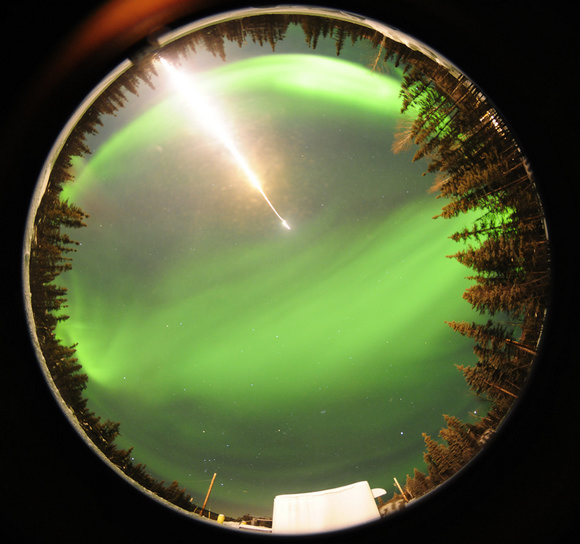Practice your French counting skills and enjoy a beautiful night launch all in one fell swoop! An Ariane 5 rocket launched last night (May 15 at 22:13 GMT) from Europe’s Spaceport in French Guiana, sending two telecommunications satellites to space. The satellites, JCSAT-13 and Vinasat-2, were successfully and accurately injected into their transfer orbits about 26 minutes and 36 minutes after liftoff, respectively. This was the 62nd Ariane 5 launch, and the second this year. In March, an Ariane 5 rocket sent the ATV-3 “Edoardo Amaldi” to the International Space Station.
What a Space Shuttle Launch REALLY Sounded Like
When I attended my first space shuttle launch, the most amazing thing about the whole launch experience may have been the sound. Being there at Kennedy Space Center is nothing like seeing it on television. When the sound waves travel across the 5.6 km (3.5 miles) from the launchpad to the KSC press site, the noise and sound just absolutely overwhelm and engulf you. You don’t only hear and see a space shuttle launch, you *feel* it! I heard astronaut Steve Robinson describe it as “it seems the air just isn’t big enough for the sound.” That sums it up pretty well.
Each launch I attended, I tried to record the crackling and popping of the rockets burning, but my audio equipment was just overwhelmed and the sound was completely distorted. This video is fairly close to what the sound is like, especially if you use a good sound system and turn it up, as the video’s creator, indiegun suggests. He used dozens of different video sources and several audio versions of shuttle launches mixed together to mimic as close to the real experience as he could.
Continue reading “What a Space Shuttle Launch REALLY Sounded Like”
Psychedelics in the Sky: NASA Launches 5 Rockets in 5 Minutes
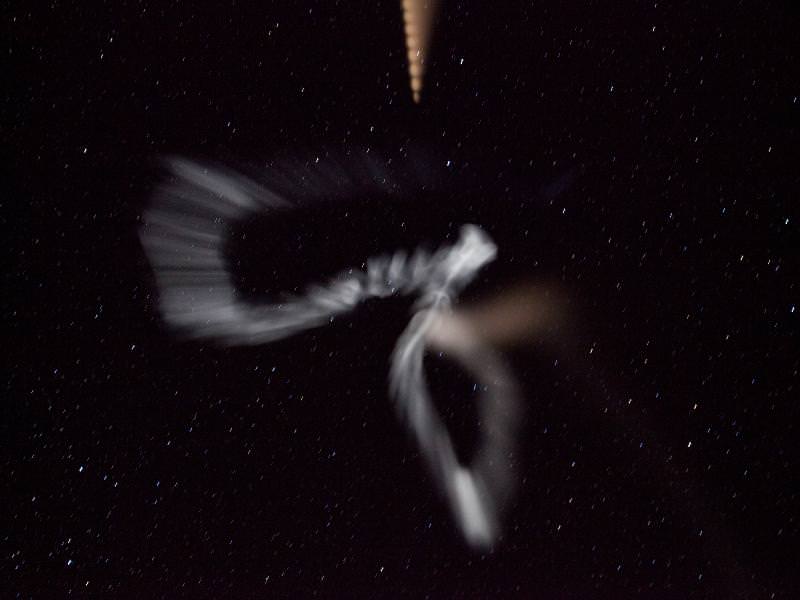
[/caption]
After several days of delays due to weather and technical issues, NASA has now successfully launched five suborbital sounding rockets in five minutes from the Wallops Flight Facility in Virginia as part of a study of the upper level jet stream.
The first rocket was launched at 4:58 a.m. EDT and each subsequent rocket was launched 80 seconds apart.
Each of the rockets released a chemical tracer that created psychedelic-looking clouds at the edge of space, which were reported to be seen from as far south as Wilmington, N.C.; west to Charlestown, W. Va.; and north to Buffalo, N.Y.
The above image was taken from one of the official viewing sites by a NASA photographer; below is an image taken by John Anton from New Jersey, as well as more images from NASA, the video showing all the launches and time-lapse video from twolf1 on Vimeo.
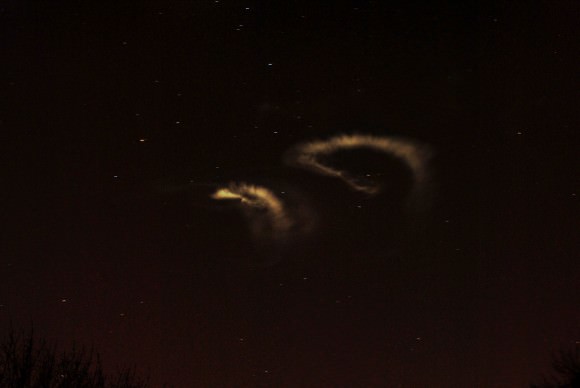
The Anomalous Transport Rocket Experiment (ATREX) is a Heliophysics sounding rocket mission that gathered information to better understand the process responsible for the high-altitude jet stream located 95-105 km (60 to 65 miles) above the surface of the Earth.
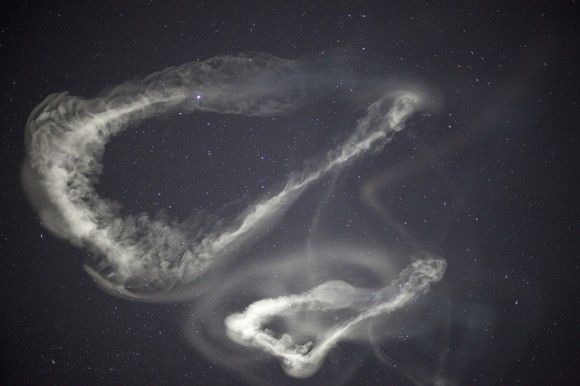
Scientists from the mission had viewing sites at three locations: the launch site in Virginia, the Rutgers Marine Field Station in Tuckerton, N.J., and the U.S. Army Corps of Engineers at Duck, N.C. Clear skies at all three locations were a prerequisite for the rockets to be launched.
The sounding rockets were two Terrier-Improved Malemutes , two Terrier-Improved Orions and one Terrier-Oriole.
Chemical tracers from ATREX rockets launched from NASA’s Wallops Flight Facility in Virginia from twolf1 on Vimeo.
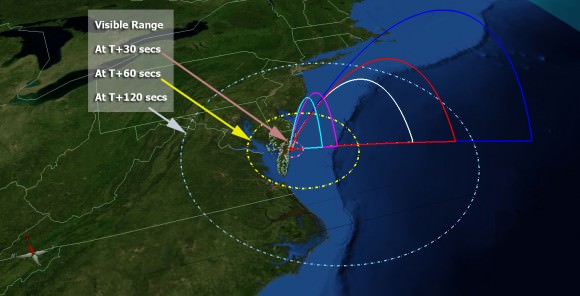
The high-altitude jet stream is higher than the one commonly reported in weather forecasts. The winds found in this upper jet stream typically have speeds of 320 to well over 480 km/hr (200 to over 300 mph) and create rapid transport from the Earth’s mid latitudes to the polar regions. This jet stream is located in the same region where strong electrical currents occur in the ionosphere. It is therefore a region with a lot of electrical turbulence, of the type that can adversely affect satellite and radio communications.
Not only did the rockets release the chemical tracers to allow scientists and the public to “see” the winds in space, but two of the rockets had instrumented payloads to measure the pressure and temperature in the atmosphere at the height of the high-speed winds. NASA will release more information on the outcome of the experiment after scientists have had time to review the data.
See a slideshow of images of the launches on Flickr from NASA
Watch the ATV Launch Live
UPDATE: The ATV launched successfully and is now on its way to the ISS, and we’ve switched out the live feed with a video replay. It will take about 6 days for the ATV 3 to rendezvous with the ISS and docking will take place on March 28th at 10:34PM UTC (06:34PM EDT).
The new ATV Edoardo Amaldi launched on its mission to the International Space Station early March 23/late March 22 at 4:34 UTC, (12:34 am EDT on the 24th). Europe’s third Automated Transfer Vehicle was launched on an Ariane 5 from the Spaceport in French Guiana to bring 7 tons of supplies to the space station.
Below is a short video shows the latest ATV’s construction all the way to the pre-launch preparations.
Rare Amateur Video of Challenger Disaster Surfaces

Visit msnbc.com for breaking news
A rare home video that captured the explosion of the space shuttle Challenger Shuttle on Jan. 28, 1986, has been found. Bob Karman and his family were on a return trip from vacation to Disney World, and filmed the launch from the Orlando airport. This is thought to be only the second amateur video taken of the launch, back when home video cameras were just becoming popular.
Dramatic Rocket Launch Into an Aurora
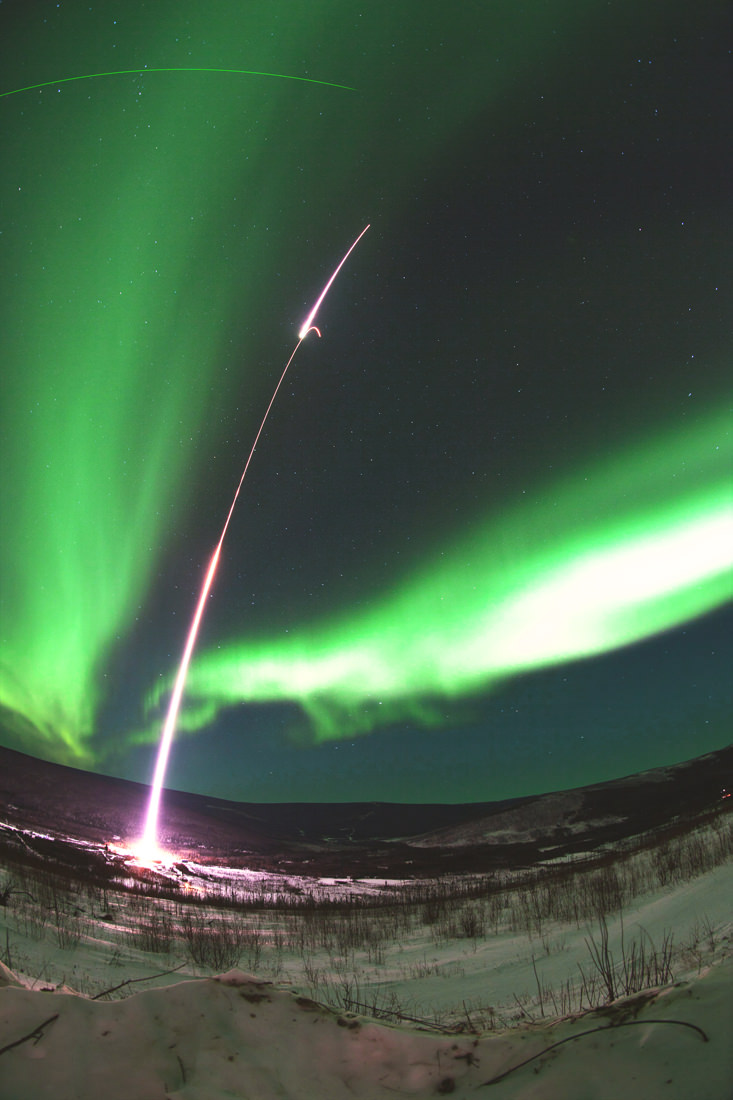
[/caption]
Over the weekend, a two-stage sounding rocket launched into a sky shimmering with green aurora. On board were instruments that will help shed new light on the physical processes that create the Northern Lights and further our understanding of the complex Sun-Earth connection.
“We’re investigating what’s called space weather,” said Steven Powell from Cornell University. “Space weather is caused by the charged particles that come from the Sun and interact with the Earth’s magnetic field. We don’t directly feel those effects as humans, but our electronic systems do.”
The rocket launched on Feb. 18, 2012 from the Poker Flat Research Range in Fairbanks, Alaska. The rocket sent a stream of real-time data back before landing some 200 miles downrange shortly after the launch.
Instruments sampled electric and magnetic fields that are generated by the aurora. While the Sun heads toward solar maximum, emissions from the Sun are more likely to head Earth’s way and cause more interference with GPS transmissions, satellite internet and other signals.
“We are becoming more dependent on these signals,” Powell said. “This will help us better understand how satellite signals get degraded by space weather and how we can mitigate those effects in new and improved GPS receivers.”
Other instruments studied charged particles in Earth’s ionosphere that get sloshed back and forth by a specific form of electromagnetic energy known as Alfvén waves. These waves are thought to be a key driver of “discrete” aurora – the typical, well-defined band of shimmering lights about six miles thick and stretching east to west from horizon to horizon.
These waves are akin to a guitar string when “plucked” by energy delivered by the solar wind to Earth’s magnetosphere high above.
“The ionosphere, some 62 miles up, is one end of the guitar string and there’s another structure over a thousand miles up in space that is the other end of the string,” said Marc Lessard, who worked with graduate students from the University of New Hampshire’s Space Science Center to monitor the launch. “When it gets plucked by incoming energy we can get a fundamental frequency and other ‘harmonics’ along the background magnetic field sitting above the ionosphere.”
The rocket was a 46-foot Terrier-Black Brant model that was sent right through the aurora 350 km (217 miles) above Earth.
This is not the first sounding rocket flight from Poker Flats to launch into an aurora. In 2009 two rockets flew through aurorae to help refine current models of aurora structure, and provide insight on the high-frequency waves and turbulence generated by aurorae.
Armadillo Launches a STIG-A Rocket; Captures Awesome Image of ‘Ballute’
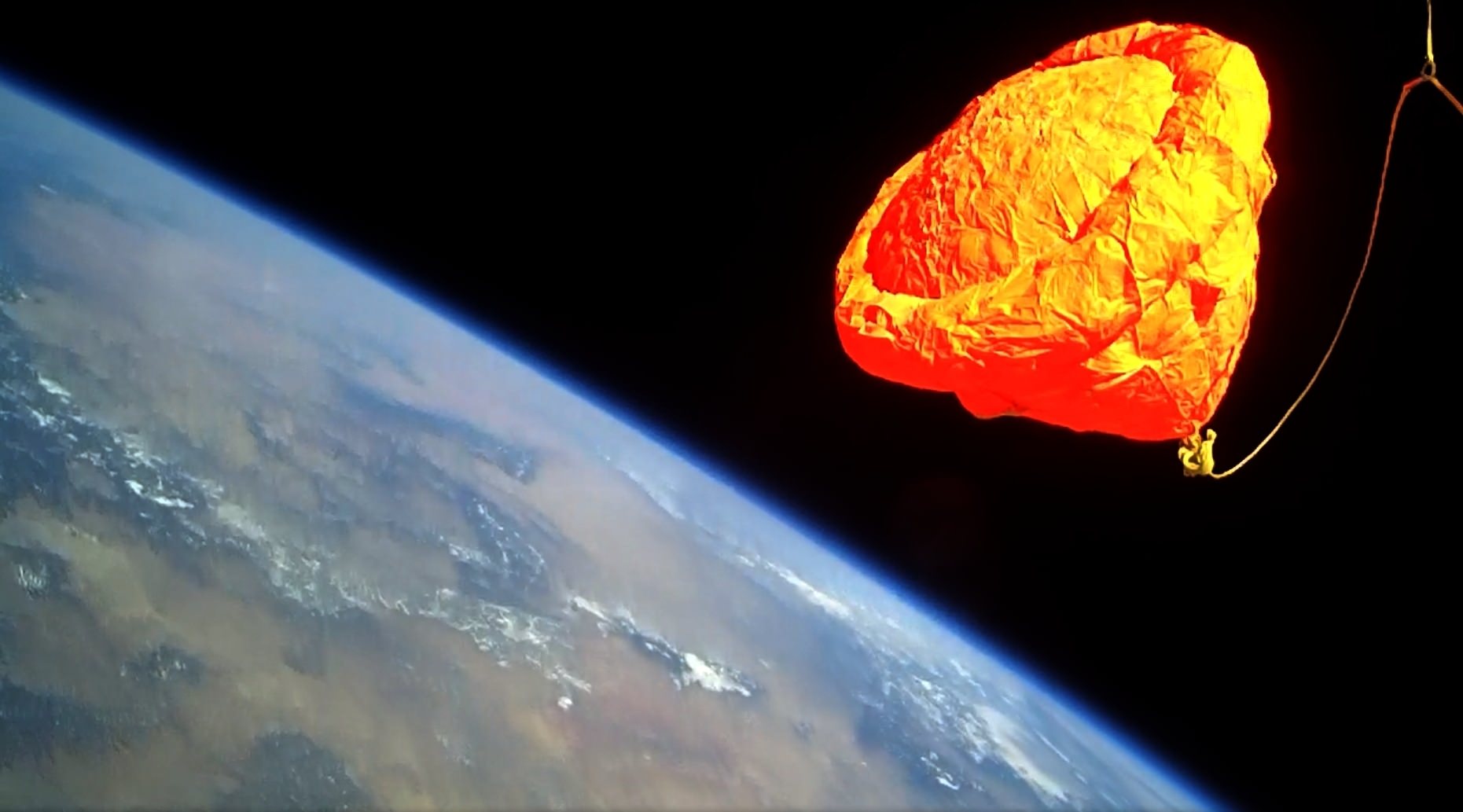
[/caption]
Over the weekend, Armadillo Aerospace launched one of their STIG-A rockets and captured a unique image of their recovery system. A ballute is a cross between a balloon and a parachute, and are braking devices that are usually used at high altitudes and high supersonic velocities. The one used by Armadillo looks very reminiscent of space capsule of the Mercury/Gemini/Apollo eras.
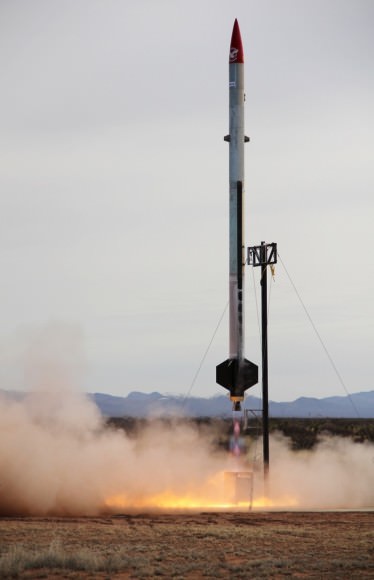
Unfortunately, the ballute recovery system used by Armadillo didn’t work exactly as planned, although the balllute itself was successful in bringing the rocket’s nose cone back to Spaceport America in New Mexico, where it was launched. Just the GPS steerable main parachute was not able to be deployed as intended.
The launch took place on Saturday, January 28, 2012 but was not open to the public or publicized as taking place, as Armadillo Aerospace said they were testing proprietary advanced launch technologies. These images were just released today.
Launch occurred at 11:15 a.m. (MDT), and flight data indicates the rocket attained a maximum altitude of approximately 82-km (~50 miles).
“This vehicle was the same one that flew on December 4th, 2011 and successfully demonstrated the feasibility of a reusable rocket,” said Neil Milburn, VP of Program Management for Armadillo Aerospace. “The altitude achieved in this second flight was approximately twice that of the earlier flight and again tested many of the core technologies needed for the proposed manned reusable suborbital vehicle.”
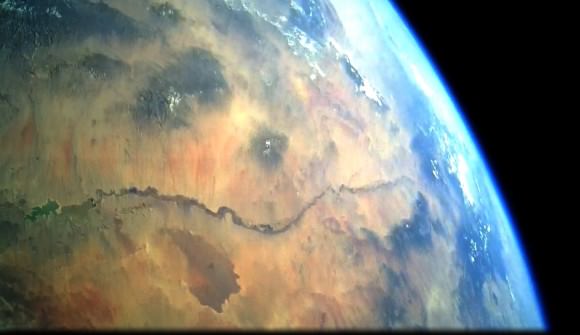
The images captured by the rocket-mounted camera at apogee also serve to indicate the spectacular views of the Rio Grande valley that await future private astronauts, Armadillo Aerospace said in a statement.
The next incremental step for Armadillo Aerospace will be a 100-km (~62 miles) plus “space shot” with the successor vehicle STIG-B, which is provisionally scheduled to launch in early spring from Spaceport America.
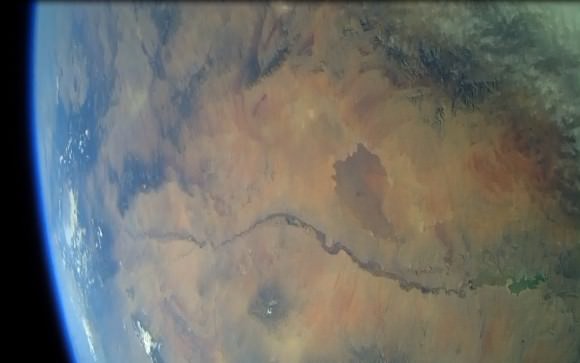
Source: Spaceport America
Delta IV Rocket Launches from Cape Canaveral with US Military Satellite
A beautiful night for a launch Thursday evening as a heavy-lift Delta IV rocket thundered off the launchpad at Cape Canaveral Air Force Station, sending a broadband communications satellite into orbit for the US military. Observers at the launch site said they could see the rocket several minutes into the flight, witnessing the separation of the strap-on boosters.
The WGS-4 mission is the fourth satellite for the Wideband Global SATCOM (WGS) system. The WGS satellites will provide enhanced communications capabilities to US soldiers in the field for the next decade and beyond.
Continue reading “Delta IV Rocket Launches from Cape Canaveral with US Military Satellite”
Soyuz Rocket Crashes With Satellite on Board
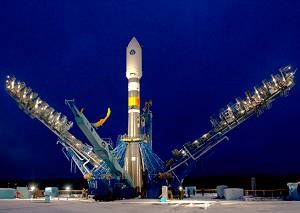
[/caption]
A day of highs and lows for the Russian space program: while the Soyuz TMA-03M capsule docked safely at the International Space Station, a Soyuz-2 rocket carrying a communications satellite failed shortly after launch from the Plesetsk spaceport. Reports say the Meridian satellite, which can be used by the military or for civilian purposes, did not reach orbit and crashed near the city of Tobolsk in Siberia, about 2,300 km from Moscow. A combustion chamber burn-through is suspected in today’s launch, another failure in what is becoming an alarmingly long list of problems for the Russian space program.
Roscosmos director Vladimir Popovkin admitted that Russian spaceflight is “in crisis” after today’s launch failure.
An update from RussianSpaceweb.com says an analysis of available telemetry on the fuel line pressure before the entrance to the engine’s injection system indicated a possible wall bulging of the combustion chamber No. 1, leading to its burn through and a catastrophic fuel leak. (RD-0124 engine has four combustion chambers).
The Interfax news agency reported the Meridian failure could delay the launch of Progress cargo craft to the ISS, scheduled for January.
Today’s rocket failure was a Soyuz-2.1b, the latest version of the rocket that has been in service in various forms since the 1960s.
In August, a Soyuz-U rocket failed carrying a Progress resupply ship; three Glonass navigation system satellites launched in December 2010 veered off course and crashed into the Pacific Ocean; and the Phobos-Grunt probe, which launched in November is currently stuck in Earth orbit and will likely re-enter and crash after its booster failed, and communications with the spacecraft haven’t been permanently established.
The next Soyuz launch, scheduled for December 26 from the Baikonur Cosmodrome may also be delayed. This flight is intended to put six communications satellites in orbit.
Armadillo Aerospace Successfully Lauches a Sounding Rocket from Spaceport America
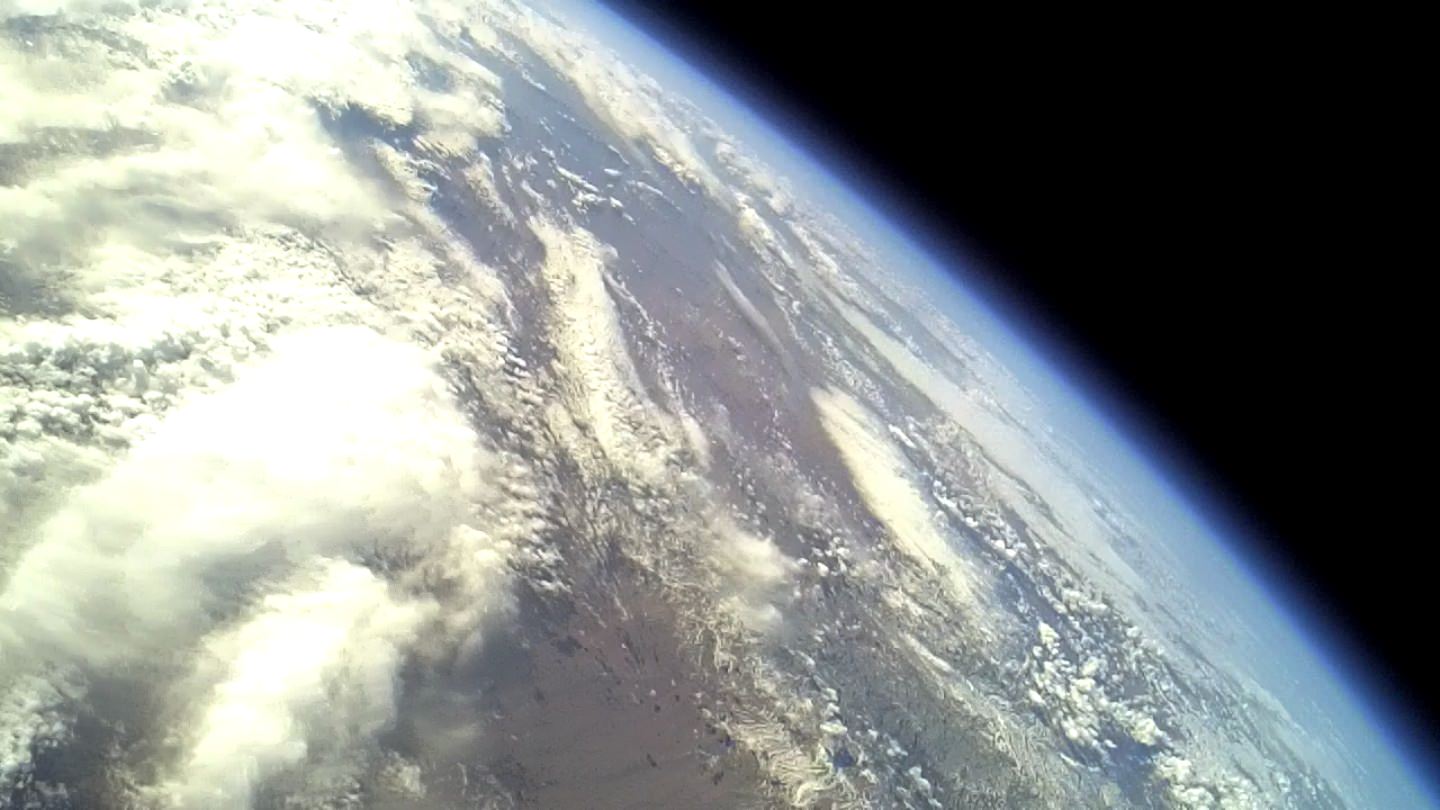
Over the weekend Armadillo Aerospace successfully launched an advanced sounding rocket from Spaceport America in New Mexico. The launch took place on Saturday, Dec. 3, 2011 at 11:00 a.m. (MST), and the STIG A rocket reached its expected sub-orbital altitude of 41.91 km (137,500 feet). Below is an image of Earth taken by a camera on board the rocket.
This latest launch is the thirteenth vertical launch test from the Spaceport America Vertical Launch Complex since 2006.
[/caption]
“This successful test of our “STIG A” reusable sub-orbital rocket technology represents major progress for the Armadillo Aerospace flight test program,” said Neil Milburn, Vice President of Program Management at Armadillo Aerospace. “The flight successfully demonstrated many of the technologies that we need for our manned sub-orbital program.”
The STIG is a long, sleek rocket designed for lower drag, high speed, high altitude flights. This rocket is aerodynamically optimized for high altitude flights with long 15 inches (38 cm) diameter cylindrical tanks instead of larger spherical tanks.
Armadillo requested that the test flight be a non-public, unpublished event, as the company is testing proprietary advanced launch technologies.
The company is one of the leading developers of reusable rocket-powered vehicles and plans to provide a platform for civilian access to suborbital space via a partnership with Space Adventures, Ltd. Armadillo Aerospace has flown over 200 flight tests with over a dozen different vehicles.
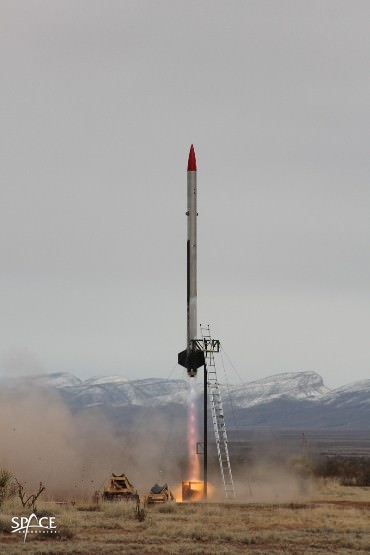
On board the rocket was an experiment designed, built, tested, integrated, and performed by a team of undergraduate students at the School of Aeronautics and Astronautics in the College of Engineering at Purdue University. The experiment studied a liquid and gas flow process that is sensitive to the gravity and acceleration levels encountered during spaceflight.
“Spaceport America has been an ideal launch facility for this kind of vehicle R&D testing activity,” said John Carmack, President and CTO of Armadillo Aerospace.
Officials from the spaceport were please at the launch’s success as well.
“Spaceport America continues to set the precedent for safe, efficient, effective service for commercial spaceflight customers,” said NMSA Executive Director Christine Anderson. “We are extremely pleased to support Armadillo Aerospace as they conduct their high altitude vehicle flight testing, and look forward to hosting their NASA-funded suborbital research launches.”
Source: Spaceport America

